Coarse wood debris – a diversified habitat
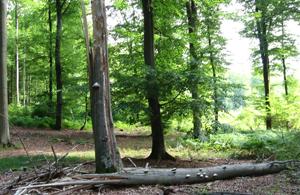 The coarse wood debris is constituted by dying, dead or decaying trees. The diversity of coarse wood debris can be found in some dead branches of an old tree as well as in decaying still upright stems or fallen trees.
The coarse wood debris is constituted by dying, dead or decaying trees. The diversity of coarse wood debris can be found in some dead branches of an old tree as well as in decaying still upright stems or fallen trees.
The death of a tree can have different reasons: overage, disease or hail, storm and fire damage.
In a “too clean” production forest, this bad quality wood is gathered and no coarse wood debris can be found. Forest management of nowadays (as in the Grünewald) the old and decaying wood is being left on the site. In fact the coarse wood debris presence of a near-natural forest offers perfect habitat conditions to many different fauna and flora species, presenting the best basis of a naturally grown diversified forest.
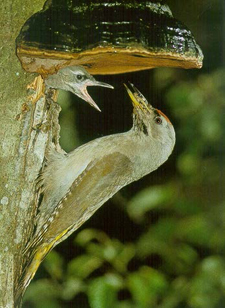 Green woodpecker |
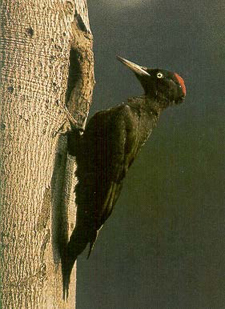 Black woodpecker |
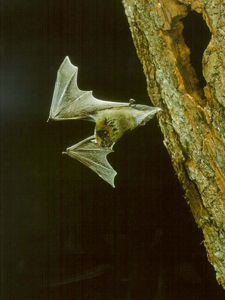 Bat |
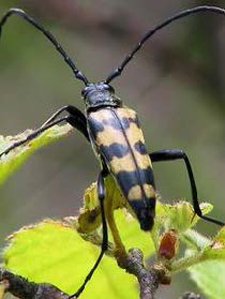 Longhorn beetle |
If you have a closer look you can discover a varied vitality around a dead tree: mushrooms, plants (as moss for example), insects, birds and even mammals. There they can find food and the perfect breeding conditions.
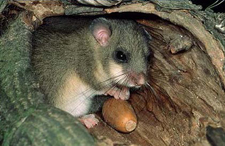 Fat dormouse |
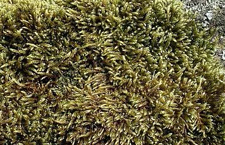 Moss |
Some species like the woodpecker for example are using the coarse wood debris to become real master builders, creating habitats for the next generations. In the frame of forestry management the coarse wood debris has to be picked up from time to time, in case the fallen trees and stem remains may present a danger for the hikers. Especially along the hiking and fitness trails, the standing dead wood has to be eliminateed, in order to guarantee the security of the visitors.
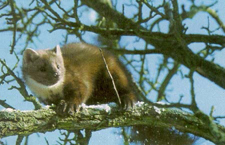 Pine marten |
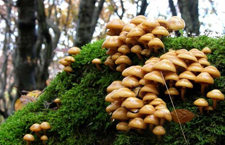 Kuehneromyces mutabilis |
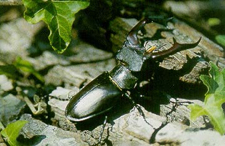 Stag beetle |
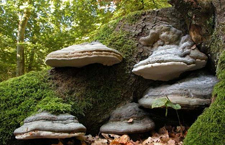 Polypores |
